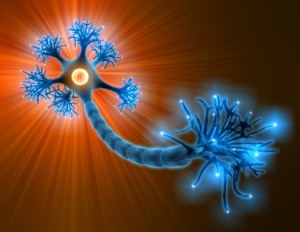 “Basic physiology books describe the spinal cord as a relay system, but it’s part of the central nervous system and processes information just like parts of the brain do,” explains Dr. Stroman, director of the Queen’s MRI Facility and Canada Research Chair in Imaging Physics.
“Basic physiology books describe the spinal cord as a relay system, but it’s part of the central nervous system and processes information just like parts of the brain do,” explains Dr. Stroman, director of the Queen’s MRI Facility and Canada Research Chair in Imaging Physics.
Dr. Stroman’s research is directed at precisely mapping the areas above and below a spinal cord injury in order to better determine the exact nature of an injury and the effectiveness of subsequent treatment. His mapping technique involves capturing multiple images of the spinal cord using a conventional MRI system.
During their research, Dr. Stroman’s team was surprised to discover that attention levels impact information processing in the spinal cord. By examining the differences in spinal cord functioning in people who were either alert or distracted by a task, they were able to see changes in the level of cord activity picked up by the MRI scanner.
“The effect of attention is one of the reasons that when you’re playing sports and you get hurt, you often don’t become aware of the injury until after the game when your attention and focus changes,” says Dr. Stroman.
The spinal cord is an extension of the brain and much of its neurological make up is quite similar. In the 70s scientists discovered that opiate receptors exist in the spinal cord – the kind that pick up our “feel good” signals like endorphins. This meant that the spinal cord responds to emotions that were thought to only exist in the brain, leading to the understanding that the emotional cortex, or limbic system, actually extends into the spine. This is why when we experience a wide variety of emotions they can manifest “in the back”.
Previous studies have shown a correlation between spinal stress and the onset of social disorders, in addition to biochemical changes in the brain. One of the areas that chiropractic care focuses on is the spine and spinal cord which is rich with all these receptors, responsible for the brain-reward cascade that triggers a feeling of well being. An impairment of these receptors due to distortion in the corresponding area of the spine can be one of the underlying causes for depression and for mood or social alterations.
